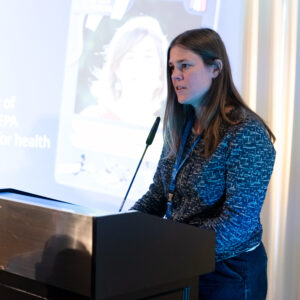Oral
09:05
National-subnational level (mis)alignment in physical activity policies in Colombia, Costa Rica, Ecuador, and Mexico
Background: The interaction between actors involved in the physical activity policy processes in Latin America remains understudied.Purpose: This study examined national-subnational alignment in the policy process (agenda setting, policy development, adoption, implementation, and evaluation) in four Latin American countries.Methods: The INTEGRATE-PA-Pol tool from the Global Observatory for Physical Activity (GoPA!) was pilot tested in Colombia, Costa Rica, Ecuador, and Mexico. Data were collected in matched pairs of the capital and a non-capital city, engaging national and subnational informants (n=27) identified by GoPA! Country Contacts. Cross-level perspective on the (mis)alignment was considered as (dis)similar perceptions regarding the engagement of national-subnational government levels throughout the policy process and the extent of the engagement (low/medium/high). The tool’s scoring guide was used to evaluate (mis)alignment (aligned/moderate misalignment/strong misalignment).Results: Twenty-three informants (response rate=85.2%) from health (52.2%), sport (26.1%), transport (13.0%), and education (8.7%) sectors participated. A third of policies focused exclusively on physical activity, with over half integrating it into other policies. In Ecuador and Mexico, informants perceived medium national and low subnational engagement in the policy process of national policies, showing a moderate misalignment. Colombia was aligned with perceived medium national and medium subnational engagement, while Costa Rica was aligned with high national and medium subnational engagement. In terms of subnational policies, national and subnational informants from Colombia, Costa Rica, Ecuador, and Mexico were aligned with engagements from low to medium at both levels.Conclusions: This study demonstrates the feasibility of collecting cross-level physical activity policy data collaborating with GoPA!’s network. Results revealed opportunities for improving alignment across-levels.Practical implications: Our results can contribute to understanding national-subnational government interactions during the policy processes in Latin America.Funding: Universidad de los Andes, Colombia; University of California San Diego, USA; Universidade Federal de Pelotas, Brazil; Centers for Disease Control and Prevention (U48DP006395).
Submitting Author
Juliana Mejía-Grueso
Population Group
Not Applicable
Study Type
Other
Setting
Not Applicable



